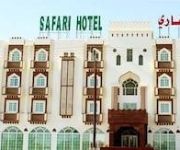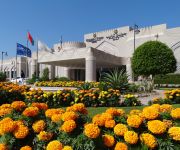Facts and Data
Webpages:
Official Unesco Page
Basis Data:
Unesco World heritage since: 2006
Size of heritage: 1,456 ha
- Buffer zone: 16,404 ha
Coordinates:
Longitude: 57,536°
Latitude: 22,999°
Summary
The property includes five aflaj irrigation systems and is representative of some 3,000 such systems still in use in Oman. The origins of this system of irrigation may date back to AD 500, but archaeological evidence suggests that irrigation systems existed in this extremely arid area as early as 2500 BC. Using gravity, water is channelled from underground sources or springs to support agriculture and domestic use. The fair and effective management and sharing of water in villages and towns is still underpinned by mutual dependence and communal values and guided by astronomical observations. Numerous watchtowers built to defend the water systems form part of the site reflecting the historic dependence of communities on the aflaj system. Threatened by falling level of the underground water table, the aflaj represent an exceptionally well-preserved form of land use.
Location on Map
Show bigger map on Openstreetmap
Aflaj Irrigation Systems of Oman
The Aflaj Irrigation Systems of Oman, located in the Dakhiliya, Sharqiya, and Batinah regions of Oman, is a UNESCO World Heritage site that showcases the traditional and sustainable irrigation practices of the country. These ancient systems have been in use for over 2,000 years and continue to play a vital role in Oman's agricultural landscape.
History
The Aflaj Irrigation Systems were developed by the ancient Omanis to overcome the arid climate and scarcity of water in the region. The word "aflaj" refers to the network of underground channels that transport water from underground sources, such as wells and springs, to the agricultural fields. The systems were meticulously designed and constructed using local materials, such as stone, clay, and palm trunks.
These irrigation systems were not only essential for sustaining agriculture but also played a significant role in the social and cultural fabric of the communities. They served as gathering places for the local population, fostering a sense of community and cooperation. The knowledge and management of the aflaj were passed down through generations, ensuring their continuity and preservation.
Current State
Today, the Aflaj Irrigation Systems of Oman continue to be actively used and maintained by the local communities. The systems are managed collectively by the farmers, who have established water-sharing agreements and regulations to ensure equitable distribution. The aflaj are carefully monitored to prevent any misuse or overuse of water resources.
The Aflaj Irrigation Systems are not only functional but also serve as a living testament to the ingenuity and resourcefulness of the ancient Omanis. The intricate network of channels, tunnels, and wells showcases the mastery of hydraulic engineering achieved by the Omanis centuries ago. The systems are a remarkable example of sustainable water management, as they rely on gravity to transport water, minimizing the need for energy-intensive pumping.
Efforts have been made to preserve and protect the Aflaj Irrigation Systems, recognizing their cultural and historical significance. The Omani government, in collaboration with UNESCO, has implemented conservation programs to safeguard these systems from degradation and ensure their long-term sustainability. These initiatives include regular maintenance, awareness campaigns, and the involvement of local communities in the preservation efforts.
The Aflaj Irrigation Systems of Oman have not only been recognized as a UNESCO World Heritage site but also serve as a source of inspiration for sustainable water management practices worldwide. Their successful integration of traditional knowledge, community participation, and ecological sustainability sets an example for other regions facing similar challenges.
Visiting the Aflaj Irrigation Systems offers a unique opportunity to witness the harmonious coexistence of nature and human ingenuity. Exploring the ancient channels and witnessing the thriving agricultural landscapes nurtured by these systems provides a glimpse into Oman's rich cultural heritage and its deep connection with the land.
Hotels and places to stay
Safari
Golden Tulip Nizwa
Videos from the area
Videos provided by Youtube are under the copyright of their owners.




